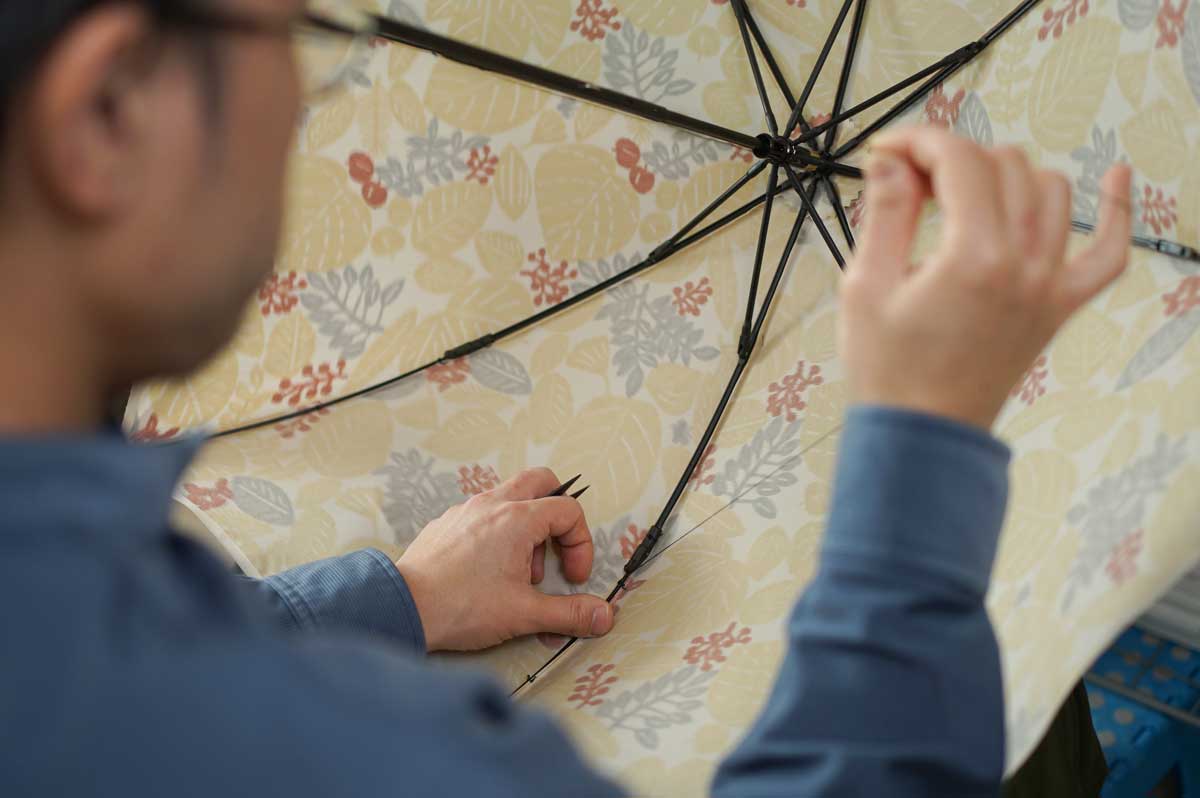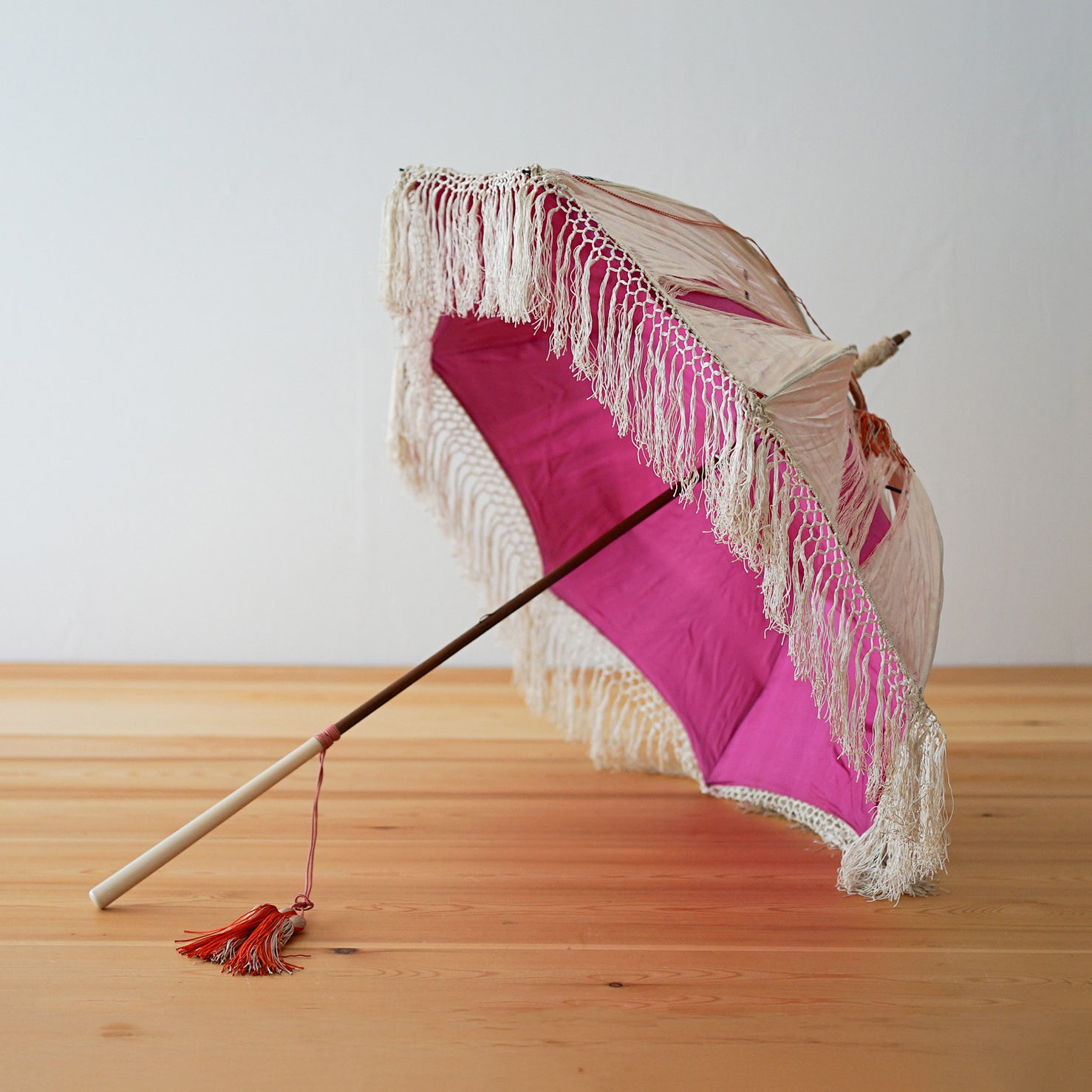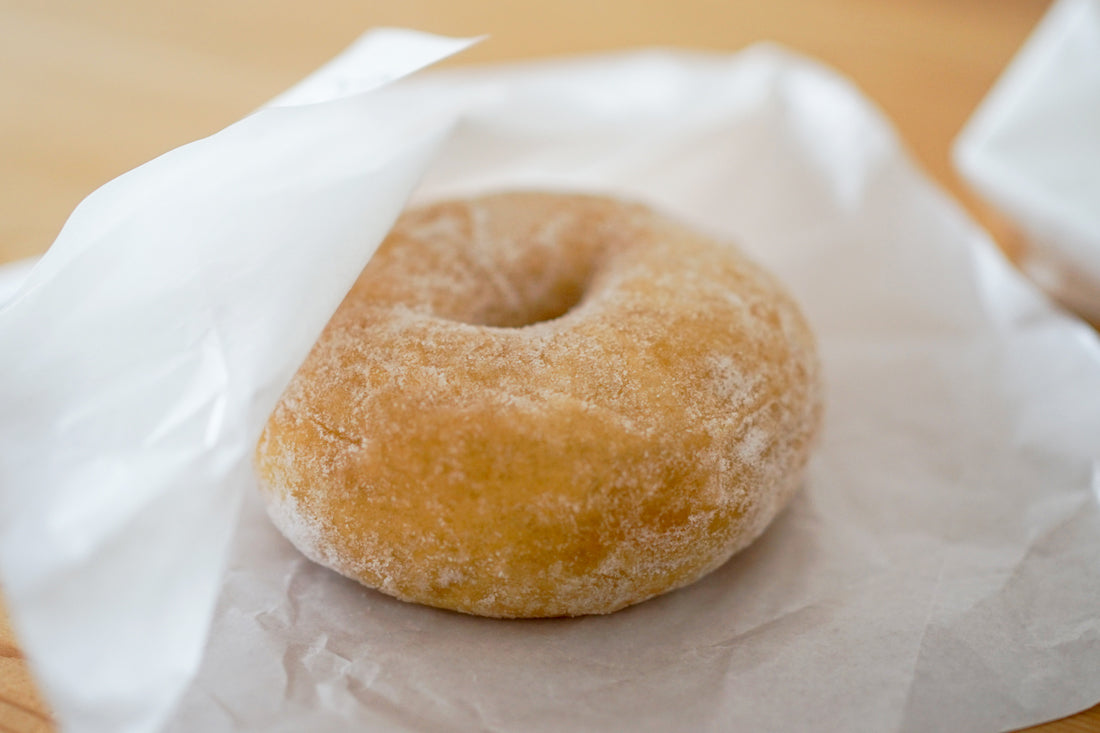"kata kata x Komiya Shoten" all-weather folding umbrellas available for pre-order from February 9th
A rain or shine umbrella has been created in collaboration between Komiya Shoten and the husband-and-wife unit "kata kata," consisting of Takeshi Matsunaga and Chie Takai, who create original dyed fabrics using techniques such as stencil dyeing and chusen dyeing.

In this second installment of our special feature, we will show you how umbrella fabric is made in Yamanashi.
Setting by Iedokoro / Movie & Photo by Orita / Photo & text by Tagawa
Click here for the first episode, "-The thoughts of the kata kata duo and Komiya Shoten-"

katakata Leaf Folding Umbrella for Sunny and Rainy Days
Color: (from left) Tin blue, Moegi, Yellow, Light orange Price: 22,000 yen (tax included)
This project started from the desire to express the clearly defined outline of katakata's leaf design by blurring the outline using Yamanashi's traditional "hogushi weaving" technique.
Like the stencil dyeing we introduced last time, the unraveling weaving process starts with making a stencil, but the process after that is different. When dyeing the temporarily woven warp threads, they are carefully hand-printed. The mixture of starch and dye is spread with a spatula to dye the fabric, so a different stencil is used for each color.

When printing, we usually place newspaper under the stencil to absorb any excess dye.
However, with this design, newspaper was not able to absorb all the dye, causing the thin lines to get crushed, so we had to go through a lot of trial and error to find how to express this.

That's where shoji paper came in.
The dyer tried out various papers, and this was the one with the best absorption rate and produced the cleanest lines, so we decided to go with shoji paper this time.

When we actually placed the shoji paper under the warp threads and dyed them, we noticed that the leaf design was dyed into the shoji paper as well as the finished warp threads.
Because it has a high absorbency, the color is more pronounced than colors dyed on the warp threads, and just looking at it will make you exclaim, "How beautiful..."
When I asked a dyer, I was told that the paper or newspaper placed underneath like this is usually discarded.
So we wondered if there was some way we could reuse this paper, and created an original gift package.

This packaging was created with the desire to create value from items that would otherwise be discarded during the dyeing process, and to practice doing something small but beneficial for the future. I would be happy if this can be passed on to those who purchase it and those who give it as a gift.
*This gift package will be given free of charge to those who purchase the "kata kata leaf folding umbrella" at our online shop and Higashi Nihonbashi shop only. Please note that there may be some fading in the dyeing.
We will also be selling a gift package set of four colors for an additional 550 yen (tax included) so that customers who purchase other umbrellas can also get their hands on one. These can be used as souvenirs or wrapping paper for small gifts, so please consider purchasing one if you like.
Click here for the "kata kata x Komiya Shoten" collaboration gift package

The warp threads dyed in this way are placed in a 130°C kiln to allow the color to set, and then they are set on a narrow loom and the actual weaving begins.
The weft thread used to match this warp thread is made of cotton.
As this was the first time that both Komiya Shoten and the weavers had tried using cotton for the weft, they had many meetings beforehand and carefully wove the weft in with a shuttle.

At this time, the temporary threads holding the warp threads in place are removed and the fabric is loosened as it is woven, causing the dyed design to shift slightly, creating a softness reminiscent of a watercolor painting.
This is a characteristic of unraveling weaving, and after the loom has progressed a little, the temporary thread is removed and unraveled, and this process is repeated slowly, making a loud clanging noise as the fabric is woven.

Once the fabric was finally completed, it was given waterproof and UV-resistant treatments, and then the craftsmen painstakingly crafted each one into an umbrella that can be used in both rain and shine.
Please experience the new Koshu weave fabric, which combines a soft, unraveled texture, a cotton feel, and gentle designs and colors.

Click here for the product page
Next time we will introduce the products.
This folding umbrella is designed with functionality in mind, with a 2-way design and an umbrella cover that can be used as an eco-bag.
We will explain in detail not only the design but also the ease of use.

For more information on kata, click here







